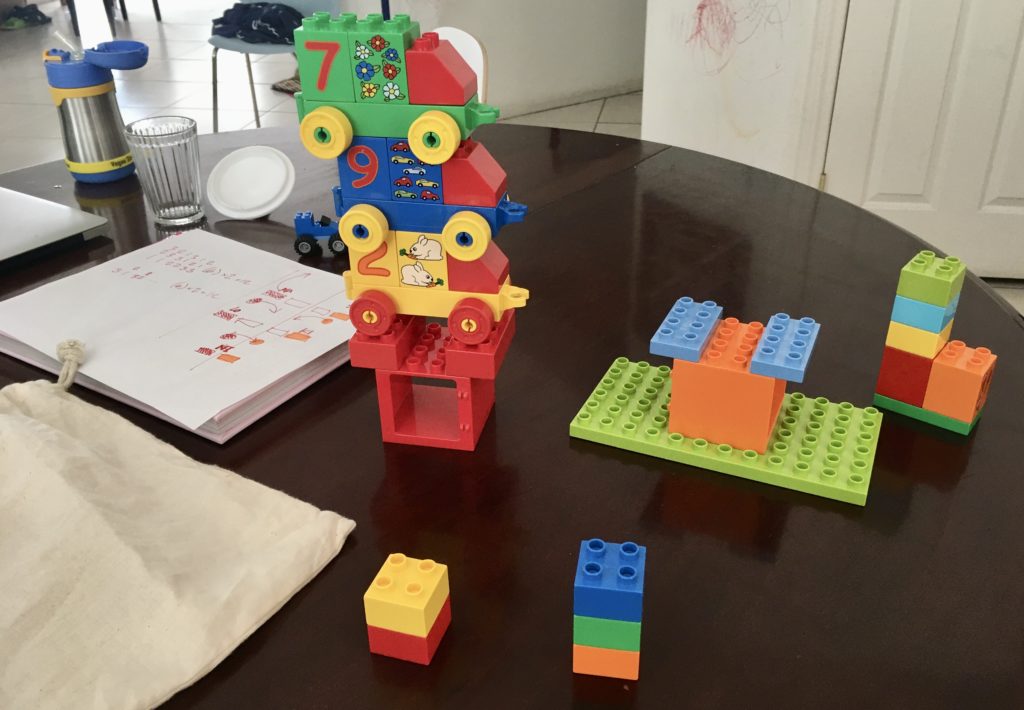I had originally written in early August as update to my original review, but I didn’t get around to posting till now in early October. Aside from one predictably disastrous game with my wife, Mottainai’s ease of setup and quickness of play continues to be perfectly suited for life with young children when even self-gaming is a rare and often short lived event.
Damn this is one fine game.
The analogy that floats in my head is that Innovation is a fencing duel, Glory to Rome is a raucous pillow fight, and Mottainai is a knife fight in a dark room.
My opinion of the game had previously hit a high-plateau when I last reviewed it. In the intervening months I’ve made a concerted effort to get better at Crafting and Selling. Neither of these tasks are easily intuitive like to Monking and Smithing, but once I got a handle on those them, the game blossomed yet again. I’ve also developed a fondness for Tailoring since getting two covered tailor helpers is a devastating position, cycling through a sixth of the deck every other turn.
I’d say that most of my games are still won via a quick race to 5 works, however, many more of these plays now assisted by crafting. I also need to work my personal inclination towards building and get better at making early sales. Even though it’s tempting to leave materials in the craft bench for future works, selling a couple items forces the rush-builder opponent reassess their strategy (even though it would usually still be best for them to end the game as quickly as possible since they have already committed to that path).
As an aside, I have not yet tried the extended game with the endgame condition at 6 works on a side. With my big-builder tendency, I understand why people might prefer it, but I think the game is made great because of this fundamental tension of shooting for an quick ending versus selling goods. I should try it at some point, but I suspect it will bloat the play experience.
I am also now much better at playing the individual cards, especially knowing if something is worth holding a couple turns so I can complete the work (very rarely). Most games where I spend such effort to complete a work will result in a loss. The opportunity costs are too high and cycling your hand is so critical that if you can’t shoot the silver bullet immediately, it is invariably better to use its task and move on.
At this point, I’ve developed that ESP feel that comes with card games that I’ve played an ungodly amount of times (such as Tien Len or Ticket to Ride). My brain has wrapped itself around the deck so that I feel the shape of the game just by a few cues here and there.
I might be overly cocky (especially since I’ve only once played another human), but I think it would be virtually impossible to lose a game with a first time player. Extending this completely untested hypothesis, I would conjecture that I would win 9 games out of 10 with a new player, which should be a ridiculous claim for such a high randomness game. The fact I would dare to make such a conjecture shows the level of skill that is embedded in this design. After these initial plays with a hypothetical opponent, I think the the disparity would quickly level out to two thirds of the games until it flattens out to even.
The hard part would be to get a new player to get past the initial introduction to the game. Mottainai is an intricate, counterintuitive duck. Glory to Rome is equally convoluted, but this experience feels counterbalanced by its silliness and patently broken combos. Innovation is a bit more methodical and forgiving than either game. Mottainai uses the insane flow chart of Glory to Rome to recreate Innovation as a sprint. Accelerating the byzantine mechanics of Glory to Rome creates a bewildering experience, hiding the vast opportunities for skilled play.
After 180 plays, I still feel there is room for improvement, though I most likely need to start find opponents who aren’t myself to get there.
Not surprisingly, I now rate this game a 10.
